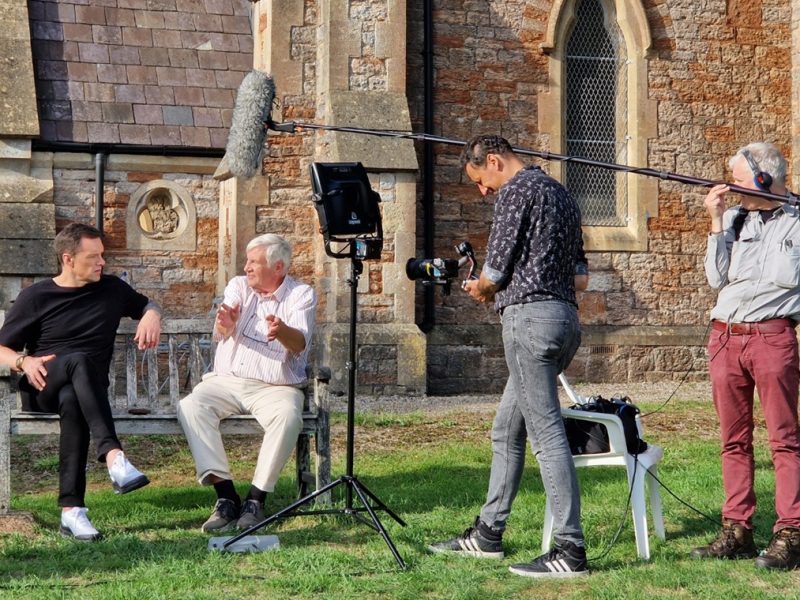AN Irish TV presenter and camera crew visited Mendip Hospital Cemetery in Wells in September to see what lessons can be learned for similar burial grounds in Ireland.
The RTE team filmed Niall ‘Bressie’ Breslin interviewing Peter Jaggard, Chairman of the Friends of Mendip Hospital Cemetery, Clare Blackmore, the Vice-Chairman, and Jean MacCormack, who is site manager and head gardener.
Bressie, as he is known in Ireland, is a former rugby player, musician, academic and mental health advocate. He is on a quest, with the families of those concerned, to name more than 1,300 Irish people buried in unmarked graves in the hospital grounds of St Loman’s Hospital, a former psychiatric hospital in his native Mullingar, in Co Westmeath in Ireland.
Adults and children died and were buried under numbered metal crosses without names in St Loman’s, but those crosses have now been removed.
An online campaign, instigated by a family member, Julianne Clarke, has seen 15 families reinstate the names of their ancestors in the graveyard, and Bressie is supporting the call for a memorial wall to be built for all who rest there.
For the documentary, Bressie will investigate how many more institutional graveyards like this there are around Ireland and what can be done to respect and protect them. He travelled to Wells in September to find out more about Mendip Hospital Cemetery, that was opened in 1874 (St Loman’s in 1855) as the burial ground of the Somerset & Bath Pauper Lunatic Asylum, later known as the Wells Mental Hospital, and then Mendip Hospital. It is the final resting place for nearly 3,000 patients and staff, with the last burial in 1962 (St Loman’s was in 1970).
Like in St Loman’s, the patients in Wells were buried with numbered metal markers without names. The cemetery today has been saved and turned into a nature reserve as a beautiful and peaceful living memorial to all those buried there and is maintained by volunteers.
The on-site chapel houses a museum that tells the story of the hospital in words and pictures. Significantly, there is access to burial records that show the names, age and place of origin, and can point to the approximate area of the cemetery where the burials took place.
Many of the original metal markers have been uprooted and now lie in clusters around the cemetery but the Friends are planning to identify where each patient is buried and install a plaque to remember them individually.
Bressie was shown around the graveyard, and discussed with the volunteers what they are achieving and how important the place is to them, and why they feel it is so important to remember those who are buried there and to acknowledge their human dignity.
Accompanying Bressie were RTE TV Producer Director John McMahon, Lighting cameraman Lanka Perren, Sound Engineer Steven Farrell, and Make Up Artist Margaret Curran.
Clare Blackmore said: “It was with great pleasure that the Mendip Hospital Cemetery welcomed a television crew from RTE in Ireland so that they could see the work done, entirely by volunteers, to preserve our Grade II listed asylum cemetery in Wells for the future.
“They were very interested in the history of the cemetery and the research done to honour the memories of the nearly 3,000 souls buried there and were very impressed by the peace and beauty of the three acres which is looked after by the Friends of Mendip Hospital Cemetery.
“They also believe that the people buried there should not be forgotten and lost to history as they all have a story to tell, and that they should be remembered with respect despite their hard lives with accompanying mental health issues.”
The documentary is expected to air on RTE One, the main Irish public service channel, later in 2025 and will be available to view on www.rte.ie/player worldwide once it has been transmitted.


